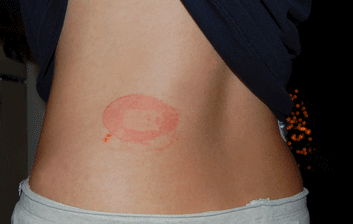 Allergic contact dermatitis is increasingly being reported with acrylic adhesives used by diabetes patients to attach glucose sensors to the skin and also with the medical glues used by surgeons for wound closure, according to the Australasian College of Dermatologists.
Allergic contact dermatitis is increasingly being reported with acrylic adhesives used by diabetes patients to attach glucose sensors to the skin and also with the medical glues used by surgeons for wound closure, according to the Australasian College of Dermatologists.
In a statement, the ACD highlights case reports from Dr Mei Tam, a Melbourne dermatologist and President of the Skin and Cancer Foundation Inc who recently saw contact dermatitis in a 59 year old diabetic patient who started to use a continuous glucose monitoring device.
The device is attached by an acrylic adhesive to the patient’s arm and is replaced fortnightly. It wirelessly connects to a smartphone app and provides accurate information about her glucose readings throughout the day.
“After six months, she noticed that the skin underlying the device had started to become red and itchy with blisters. This allergic reaction would happen faster with ongoing use and appear within half an hour of applying the device,” says Dr Tam.
“The patient had no history of allergies and was treated with topical cortisone. After patch testing, I concluded that she was allergic to the adhesive, isobornyl acrylate, found in the glucose sensor.”
The severe blistering caused the glucose sensor to lose contact and stop reading. After unsuccessfully trying mometasone furoate, the patient’s contact dermatitis was eventually managed with a steroid lotion followed by a hydrocolloid plaster.
The plaster can be customised with a handmade hole punched centrally to allow the sensor’s canulla through, a drop of the steroid lotion in the hole, followed by the sensor and topped by a circular adhesive patch that holds the whole lot down.
Allergic contact dermatitis is also being reported with medical glues used for surgical wound closure, particularly following orthopaedic surgery.
“These glues contain 2-octyl cyanoacrylate, which has been shown to be the allergenic compound,” says Dr Bernadette Ricciardo, a Perth-based dermatologist.
It is typically with the second exposure to the glue that a severe, itchy, blistering rash occurs. In these patients, the itch and rash typically develop at the site of glue application within 24 to 72 hours of surgery.
“While the glue remains in contact with the skin, the itch and rash continue to escalate. Therefore, it is very important that this reaction be recognised early, so that any residual glue can be completely removed from the skin surface,” says Dr Ricciardo.
“The contact dermatitis is typically managed with application of a strong steroid ointment, and occasionally oral steroids are required for more severe cases.”
In six orthopaedic cases that Dr Ricciardo recently reported the contact dermatitis resolved within two weeks of removing the glue, and there was no adverse impact on the surgical outcome.
Dr Ricciardo says it is important that patients with suspected allergic contact dermatitis to medical glue undergo patch testing by a dermatologist. Patch testing can also assess for cross reactivity with other cyanoacrylates, which may be present in other glues.
She also advises patients undergoing surgery to inform the surgeon if they have previously developed itch or rash following exposure to any cyanoacrylate-containing glue.